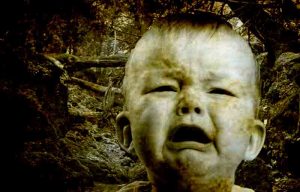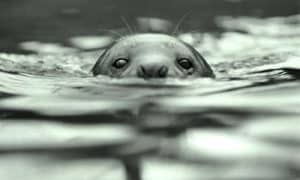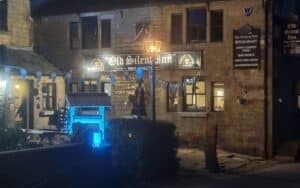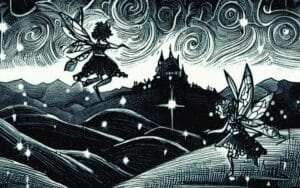What would make you believe in fairies? NIA JONES looks at the fascinating case of Sir Arthur Conan Doyle and The Cottingley Fairies
On a mild, bright Saturday afternoon in 1917, 17-year-old Elsie Wright (1901-88) and her cousin, 10-year-old Frances Griffiths (1907-86) borrowed Elsie’s father, Arthur Wright’s quarter plate camera and ventured down to the Beck (a local term for a stream) next to the Wright’s home garden in Cottingley, a suburban village within Bradford, West Yorkshire.
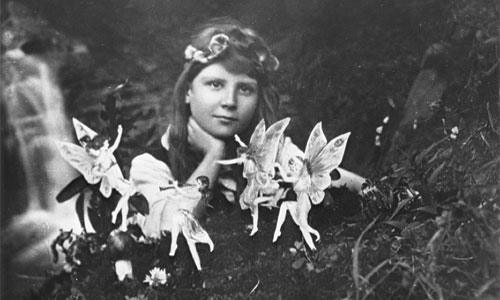
Returning to the house, the girls enthusiastically claimed that they had been interacting with the Beck’s woodland gossamer-winged fairies and a sprightly gnome, whom also resided down in the glen.
Not only had the girls encountered and frolicked happily with these delicate beings, but they had even managed to photograph them!
What were The Cottingley Fairies?
The girls proclaimed no desired attention, notoriety or fame from what they had experienced, revealing they had encountered fairies in the glen on a daily basis, and were merely returning to photograph them.
Elsie’s father dismissed the pictures of the Cottingley Fairies as fake immediately, he had developed the photographic plates, as he was an early-qualified electrical engineer – but Elsie’s mother, Polly was wholeheartedly convinced they were genuine.
Causing quite a sensation, these five pictures have become famously known as ‘The Cottingley Fairies’ photographs, undoubtedly one of strangest, yet compelling majestica hoaxes of the 20th century?
But, the world may have never known of their existence had it not been for two very-high profile supporters and believers – the renowned self-publicist escapologist Harry Houdini, and the Sherlock Holmes stories author Sir Arthur Conan Doyle.
In 1919, Sir Arthur Conan Doyle received a letter from fellow Spiritualist, and close friend Felicia Scatcherd; informing him that rock-solid evidence had emerged for the existence of fairies.
Conan Doyle investigates fairy claims
Conan Doyle sent researcher Edward Gardner to investigate Cottingley for him and in 1920 he wrote an article about Elsie and Frances in The Strand magazine. He also announced that The Cottingley Fairies photographs were definitely authentic along with defending the girl’s claims.
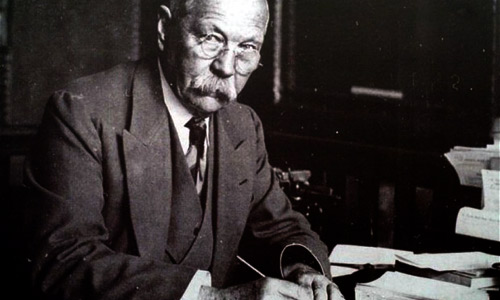
By 1922 Conan Doyle had written the book The Coming of the Fairies, discussing the compelling evidence for fairy folk from all over the world, including a collection of fairy sightings and tales; sadly the book didn’t do much to credit his new-found beliefs in Spiritualism or the supernatural. This was partly due to the lingering empirical hangover of the Victorian era, which Conan Doyle himself endorsed and expertly invoked with his ever popular Sherlock Holmes stories.
So why would a well respected physician and seemly logical author entertain such images as genuine, leaving himself open to ridicule and scorn?
Perhaps the answer lies in the aftermath of WWI, Arthur Alleyne “Kingsley” Doyle, Conan Doyle’s eldest son was wounded and died at the Somme in 1918, he also lost his brother Innes, two brothers in law and two of his nephews during the conflict. It seems the loss and horror of war changed Conan Doyle’s outlook, his way of thinking was no longer sufficient to keep mankind from destruction.
Dabbling in seances, desperate to contact his son, he likely suffered mentally as he searched for new meaning to make sense of his grief.
He leaned more towards Theosophy, a philosophy championed by artist William Butler Yeats, which purports knowledge of God can be achieved through a number of individual processes.
A central concept of Theosophy sees elemental beings, such as fairies form part of the universal soul’s hierarchy of spirits, in short, he wanted desperately to believe in something that was ideal and pure away from the reality of his pain, a pain that was certainly, at times unbearable.
It is fair to assume that the ‘The Cottingley Fairies’ photographs came along at the right time for Sir Arthur Conan Doyle, re-enforcing what he really needed to survive, also providing a welcomed distraction from the harshness of the catastrophic losses in his life.
Conan Doyle believed in The Cottingley Fairies until the end
On July 8, 1930, Sir Arthur Conan Doyle passed away, still ardently believing in fairies, hopefully at peace, perhaps the last years of his life were made just that little bit lighter by fairy dust, Elsie and Frances.
Though the girls maintained the Cottingley Fairies photographs were real until five years before their deaths, finally writing letters to the Yorkshire Post in the 1980s; Elsie confessed that the photos were fake, staged with paper cut outs of drawings, propped up with twigs and hat pins.
According to Elsie, the whole prank just snowballed and quickly became out of hand, both women remained surprised so many “fell for it”.
Of course, technically speaking the photos didn’t stand a chance with the advancement of basic photographic manipulation detection – but interestingly, Frances remained adamant till her last breath that the “the Fairy Sunbath” fifth photo, not featuring the girls was indeed authentic.
On viewing the photographs now with a modern eye, though they are charming, they do look highly artificial and it is fascinating how the parameters of validity change and morph throughout the years.
Fascination still surrounds photos
A fascination still surrounds these photographs today, despite the later confessions of Elsie and Frances, many believe the fairies in Cottingley are indeed real and there was something a bit peculiar, perhaps slightly yonder-ly about Elsie herself, and her ability to attract the supernatural.
Others just jovially revel in the sheer boldness of the girls claims and their ingenuity, and the fact that they were able to convince so many, including Houdini and the creator of the mighty Sherlock Holmes, that fairies actually existed at Cottingley Beck.
Perhaps there actually are wispy dainty figures, dancing in moonlight at the bottom of everyone’s garden, whatever you may believe, just to be on the safe side, always heed J.M Barrie’s words in Peter Pan: “Every time you say you don’t believe in fairies, a fairy dies.”
How the Cottingley Fairies Photos were made
What is your opinion of the Cottingley Fairies? Tell us in the comments section below!

